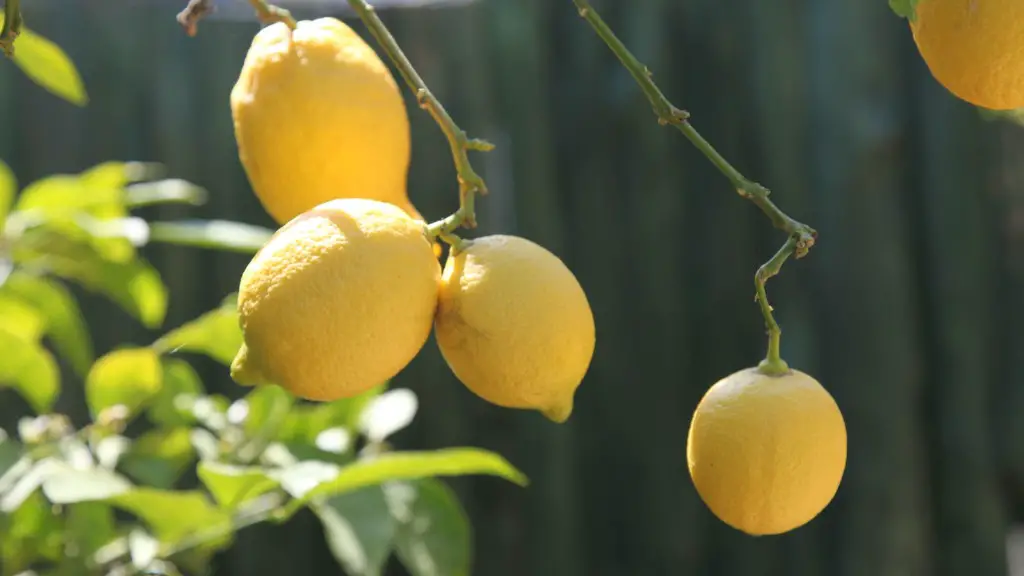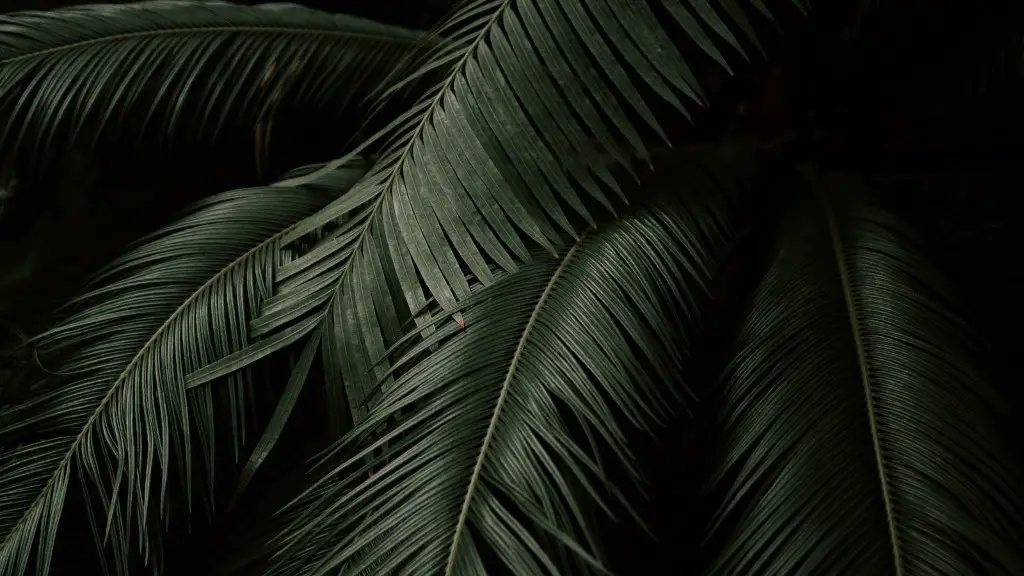Can a lemon tree be planted in a wine barrel? The short answer is yes. Growing a lemon tree in anything other than the ground can be tricky and requires a certain level of know-how, but with the right preparation, it is possible. The soil, the container, and the amount of sunshine that the tree will get are all key elements when attempting to grow a lemon tree in a wine barrel.
Firstly, pick a barrel that is deep enough for the roots of the lemon tree to develop. Most wine barrels should be of appropriate size and won’t require cutting. Next, ensure the barrel has good drainage, as a trapped water can quickly rot the roots of the lemon tree. To achieve this, a couple of holes should be cut around the bottom of the barrel. Then, fill the bottom third of the barrel with potted soil, compost or mulch, and the top two thirds with well-draining soil. Depending on the available space, a lemon tree can be placed in a pot first, then that within the wine barrel.
An important factor for growing a lemon tree in a wine barrel is water. The soil in the barrel needs to be kept consistently moist, but not wet. Too much water can lead to root rot, and too little water can cause the tree to lack growth. It is also essential to fertilize the lemon tree regularly, usually with citrus-specific fertilizer.
When it comes to sunshine, lemon trees need at least four hours of direct sunlight per day. If the tree is placed in a shady spot, it can still survive, but its growth will be slow and the fruit production won’t be as rich. In such case, the leaves may be darker, smaller, and the tree will not bear as much fruit.
Overall, with the right knowledge and preparation, planting a lemon tree in a wine barrel can be successful. The main point to take away is that a healthy potting mix, good drainage, and enough sunlight are a must. With those elements in line, it shouldn’t be too difficult to nurture a healthy lemon tree.
Container Selection
When selecting a container for growing a lemon tree in, it is important to choose one that is wide enough for the roots to spread out, but not too big that it overflows. Wine barrels, by their nature, give plenty of room for the roots to spread out and can add an interesting design aesthetic to any landscape or garden. It is also important to factor in the weight of the container when full, as wine barrels can become quite heavy when filled with soil and water.
In addition, be sure to choose a wine barrel that is made of either plastic or metal. Avoid those made of wood, as pests such as termites and diseases like root rot may quickly spread.
A wine barrel can be a great alternative to traditional terra-cotta pots when it comes to growing a lemon tree. With the right preparation and a bit of know-how, it is even possible to keep the tree in the wine barrel all year round.
Light and Temperature Requirements
Lemon trees tend to thrive in temperate climates, especially during summer and autumn. Lemon trees appreciate warm daylight and cooler nights for best growth, so it’s important to ensure the tree is placed in an area that gets enough penetration of both sun and wind. Ideally, temperatures should range between 25°C (77°F) and 10°C (50°F).
When it comes to light, lemon trees appreciate at least 4 hours of direct sunlight a day. If the tree is in an area that receives only indirect sun, additional light sources like artificial lights may be necessary for optimal growth.
When placing a lemon tree in a wine barrel, it is always important to use a potting mix that is loose enough to allow roots to grow, and to keep the soil consistently moist but not wet. This will help to prevent root rot and support healthy growth of the tree.
Pruning and Fertilizing
When it comes to fertilizing a lemon tree, it is recommended to use a citrus-specific fertilizer every 3-4 weeks. During the growing season, it is best to aim for a balance of nitrogen, phosphorus and potassium. Doing so will prevent the tree from becoming stunted or sick.
In addition, pruning is important to maintaining the desired shape of the tree. When pruning, always start from the top and work downwards. Avoid removing more than a third of the tree at once, as this could be too traumatic for the tree. Also, when the tree reaches about 2 m tall, it is best to stake it for stability.
Harvesting
If all the conditions are met, it is likely that the lemon tree will bear fruit after 3-4 years. Once fruits appear, they should be harvested when they have turned yellow. It’s important to know that lemons do not continue to ripen after they have been picked, so it is best not to pick them too early.
When it comes to storage, lemons can keep at room temperature for around a week. It is also possible to store them in the refrigerator for up to three weeks. As for any produce, handling with care is essential in order to prevent damage to the fruits.
Insect Control
Insects can be detrimental to the health of a lemon tree. If not controlled, they can cause damage to the leaves, flowers and fruits of the tree. Pruning any damaged areas, selecting disease-resistant lemon varieties, and applying insecticidal soaps or oils are all effective ways to control or prevent insects.
In some cases, introducing beneficial insects can also help to keep the harm-causing-pests away. When it comes to lemon trees, ladybugs, lacewings, and spiders are all great natural predators. Once again, the best prevention is the regular check-up of the tree and the application of any pest control if necessary.
Weeding
Weeds can be a major concern when growing lemons in a wine barrel. This is because weeds will compete for the nutrients and water of the tree, and end up draining the soil of its vital elements. Keeping the weeds in check is essential for a healthy, productive lemon tree.
Weeds can be easily removed by hand, but in the case of persistent weeds, it may be necessary to apply herbicides. Before doing so, be sure to read all safety information on both the herbicides and the container. Such products can be highly toxic and must be handled with caution.
Conclusion
Growing a lemon tree in a wine barrel involves quite a bit of preparation and care. With the right know-how, however, it can be a rewarding experience. It is possible to keep the tree in the barrel all year round, but during winter it is best to bring it indoors to avoid cold and frost damage. Also, be sure to keep an eye out for pests, weeds, and to keep the soil moist.



